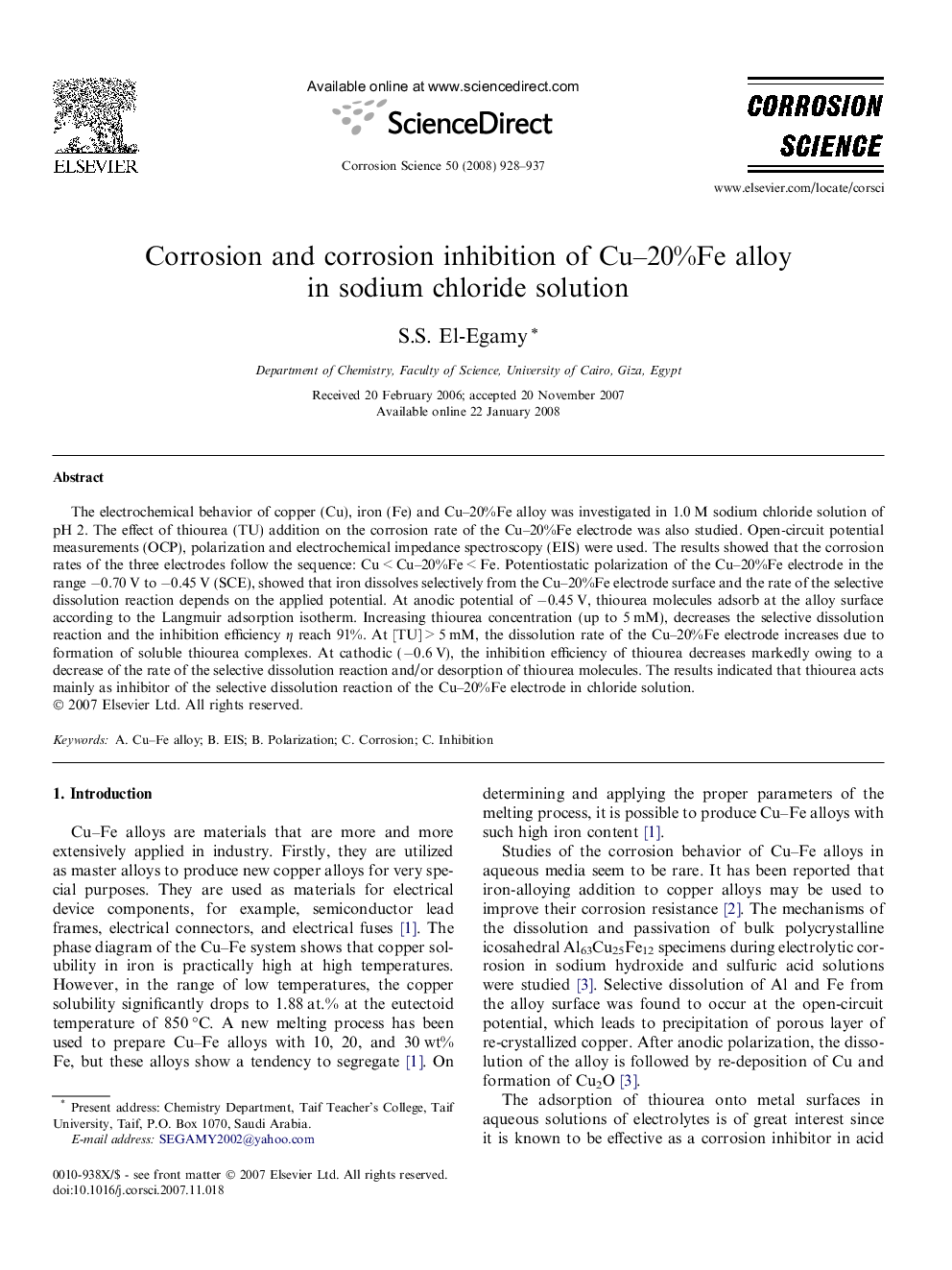| Article ID | Journal | Published Year | Pages | File Type |
|---|---|---|---|---|
| 1471916 | Corrosion Science | 2008 | 10 Pages |
The electrochemical behavior of copper (Cu), iron (Fe) and Cu–20%Fe alloy was investigated in 1.0 M sodium chloride solution of pH 2. The effect of thiourea (TU) addition on the corrosion rate of the Cu–20%Fe electrode was also studied. Open-circuit potential measurements (OCP), polarization and electrochemical impedance spectroscopy (EIS) were used. The results showed that the corrosion rates of the three electrodes follow the sequence: Cu < Cu–20%Fe < Fe. Potentiostatic polarization of the Cu–20%Fe electrode in the range −0.70 V to −0.45 V (SCE), showed that iron dissolves selectively from the Cu–20%Fe electrode surface and the rate of the selective dissolution reaction depends on the applied potential. At anodic potential of −0.45 V, thiourea molecules adsorb at the alloy surface according to the Langmuir adsorption isotherm. Increasing thiourea concentration (up to 5 mM), decreases the selective dissolution reaction and the inhibition efficiency η reach 91%. At [TU] > 5 mM, the dissolution rate of the Cu–20%Fe electrode increases due to formation of soluble thiourea complexes. At cathodic (−0.6 V), the inhibition efficiency of thiourea decreases markedly owing to a decrease of the rate of the selective dissolution reaction and/or desorption of thiourea molecules. The results indicated that thiourea acts mainly as inhibitor of the selective dissolution reaction of the Cu–20%Fe electrode in chloride solution.
